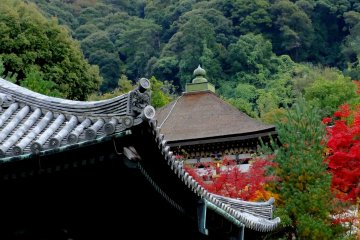
Nene and Kodaiji Temple, Kyoto
Takako SakamotoAfter Hideyoshi's death, Nene had Kodaiji Temple built in Kyoto, retiring there as a nun. Not many people know Tokugawa Ieyasu, built it for her.

Kodaiji (高台寺) is located northeast of the Yasaka Hokanji Temple at the foot of the Higashiyama Ryozen Mountains in Kyoto. The official name of the temple is Kodaiji-Jushozenji Temple. In 1606, the temple of Kita-no-Mandokoro was dedicated in memory of her late husband. Kita-no-Mandokoro was also known as nene. The Kaisando (Founder's Hall), Otama-ya (Sanctuary), Kasatei (Tea House), Shiguretei (Tea House), Omotetmon (Gate to the Sanctuary), and Kangetsudai (Moon Viewing Pavilion) are designated as important cultural assets in Japan.
The temple garden is said to have been designed by the landscape gardener Kobori Enshu (1579-1647). The Japanese government has designated the garden as a historic site and a place of scenic beauty.
The interior of the main building was originally painted with lacquer and covered with exquisite gold decorations. However, the current building was rebuilt in 1912 after several fires. Kodai-ji hosts modern art exhibitions in spring and fall. These are set up in the rock garden in front of Houjyo and are creatively illuminated at night.
The gardens of Kodaiji are impressive to say the least. One is a rock garden of raked gravel that represents the ocean. The other is a lush garden designated as a historical site and place of scenic beauty by the Japanese government.
The main hall of Kodaiji was once covered in lacquer and gold. It was rebuilt to be more modest in design after a fire claimed it in 1912. Gardens border the hall on two sides.
This sanctuary is a special memorial hall enshrining Toyotomi Hideyoshi and his wife, Kita-no-Mandokoro (Kodai-in as a nun). The small shrine contains wooden statues of both.
Maki-e is the lacquer technique of sprinkling gold or silver powder on the lacquer while still wet. In the Otama-ya, there are a flight of stairs and small shrines with such beautiful and delicate designs on them. Hanaikada is a Momoyama-Era Important Cultural Property and depicts rafts with flowers upon them, expressing Buddha’s teachings - that everything flows without stopping.
From Hankyu Kawaramachi Station or Keihan Shijo Station, take city bus 207 and get off at Higashiyama Yasui. Kodaiji Shrine is a 7-minute walk from there. From JR Kyoto Station or Kintetsu Kyoto Station, take city bus 206 (Higashiyama direction) and get off at Higashiyama Yasui. Kodaiji Shrine is a 7-minute walk from there. From JR Kyoto Station or Kintetsu Kyoto Station, the shrine is a 15-minute drive by car or taxi.

After Hideyoshi's death, Nene had Kodaiji Temple built in Kyoto, retiring there as a nun. Not many people know Tokugawa Ieyasu, built it for her.
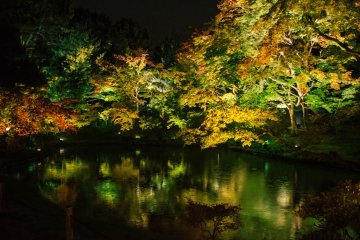
Formally known as Kodaijusho-zenji Temple and located in the Higashiyama Mountains of eastern Kyoto, Kodai-ji Temple was established in 1605 by a woman named Kita-no-Mandokoro to honor the memory of her late husband, Toyotomi Hideyoshi.

In 1606, Kita-no-Mandokoro established this temple in memory of her late husband Toyotomi Hideyoshi, one of Japan's greatest-ever military leaders. Also known as 'Nene' this remarkable woman later became a priestess, taking on the religious name of Kodaiin Kogetsuni. When she died in 1624, Sanko Osho of the Kenninji Temple became the head priest and the temple was renamed Kodai-ji. The temple itself is truly beautiful, but what grabbed my attention were the spacious grounds. It is a wonderful place to walk, people-watch, and take lots and lots of photos. The bamboo grove at the top of the hill and pond in the middle of the grounds are also very nice.
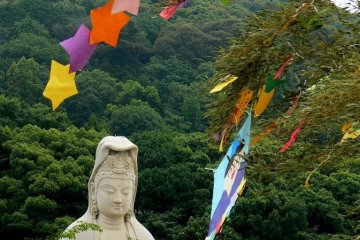
Colorful display of decorated bamboo branches in the carpark of Kodai-ji in Kyoto to celebrate the festival of Tanabata. The handmade decorations have children's wishes written on them.
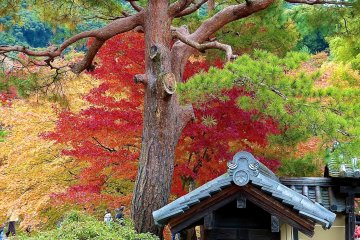
Kodai-ji Temple is located at the foot of Kyoto’s Higashi-yama Mountain, south of the famous cherry blossom spot, Maruyama Koen Park. The wife of Toyotomi Hideyoshi, a preeminent samurai warrior during the Sengoku Period (1467-1590), established this temple in 1606 for the repose of her husband's soul after his death. Making the best use of hilly slopes, the garden is absolutely superb. Passing by a teahouse, overlooking a pond, climbing up a hill, and strolling down the slope through a bamboo forest, we can enjoy various aspects of this unique cascading garden.

Enjoy the beautiful light displays during fall at Kodai-ji, a Buddhist temple in Japan's ancient capital of Kyoto.
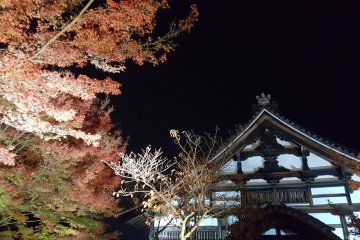

Kyoto: Beautiful silhouette of Yasaka-no-to Tower above the afterglow of the sunset

Fall in love all over again this autumn and rediscover the ancient traditions of Momiji-gari, from woodblock prints to Kyoto sweets, from boating to haiku reading
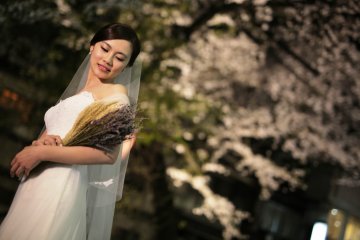
The Cherry Blossom season in Kyoto starts in late March, and from March 29 to April 14 you can experience its fleeting beauty in many of Kyoto’s parks, temple and castle gardens. Called hanami in Japanese, locals and tourists alike take this time to celebrate spring with a picnic underneath a full bloom of cherry trees. Whether you are eating, drinking, dancing or relaxing, look up and see a sea of flowers above you. At night, many places are lit up, with the blossoms taking on a magical glow. Here are Kyoto’s magnificent seven after dark.

Enjoy a luxury getaway at Hotel SOWAKA, tucked away in Kyoto's Gion district just moments away from Yasaka Shrine.

Located at the foot of the eastern mountains and Kiyomizu-dera, this Ryokan really is something else.
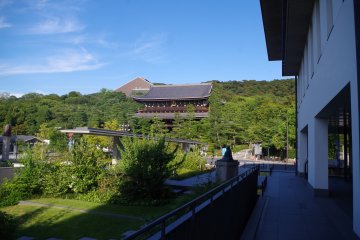
Chionin Wajun-kaikun is in a peaceful area of Kyoto where you can find rest and relaxation for your body and mind.

Trattoria Minoura is a small restaurant near Kodai-ji Temple and Yasaka Jinja Shrine. Their weekday lunch set (1500 yen) is quite reasonable and tasted pretty good. It includes a main pasta dish with a small salad and bread. Drinks and desert are extra.

For a limited time this summer, The Sodoh Higashiyama Kyoto is hosting a Japanese Sweets afternoon tea event. There will be a variety of traditional tastes on offer, including the likes of warabi mochi, dorayaki, yokan, and even shaved ice flavored with roasted green tea.

The Iyemon Cafe blends the peaceful aura of wabi sabi with modern minimalist chic in Kyoto's Karasuma Sanjo and Oike business district
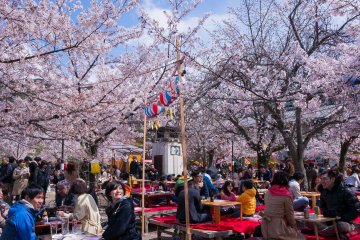
Maruyama Park is the oldest public park in Kyoto and a popular springtime cherry blossom viewing spot. It opened in 1886 and is located next to Yasaka Shrine in Higashiyama District. The park was laid out by the well-known gardening expert Ogawa Jibee (1860–1933). As it is one of the most popular places for hanami in Kyoto, it can get quite crowded during the high season in April. The main attraction of the park is a beautiful weeping cherry that is illuminated at night. In the southwest of the park is the Chorakukan Villa, which the Japanese tobacco king Murai Kichibee had built. This property is now used as a hotel.
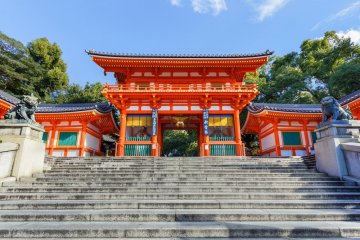
The Yasaka Cry, located in the Gion district in Kyoto, is often referred to as the Gion Shrine. The shrine is one of the most famous shrines in the city of Kyoto and is located at the end of Shijo-dori Street. The grounds of the shrine include several buildings and gates. Including the main hall and also a stage. Every year, Yakasa Shrine hosts numerous events and festivals that are important to the Japanese and is a popular destination for many visitors to Kyoto City. The Yasaka Shrine respects the gods Susanoo-no-mikoto, Kushiinadahime-no-mikoto, and Yahashira-no-mikogami. Above all, Susanoo-no-mikoto is an important god in Japanese mythology, known for his victory over Yamata-no-orochi (a great serpent with eight heads: a symbol of numerous disasters).
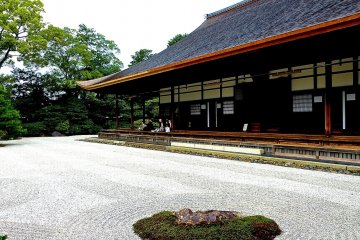
Kennin-ji is a historic Zen Buddhist temple in Higashiyama, Kyoto, Japan, near Gion, at the end of Hanami Lane. It is considered to be one of the so-called Kyoto Gozan or "five most important Zen temples of Kyoto". [Wikipedia]